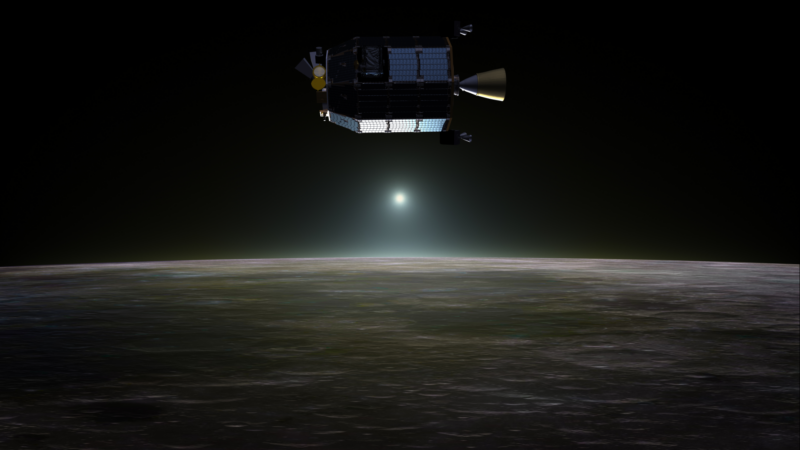
The Moon could not have a lot of an environment, largely due to its weak gravitational area (whether or not it had a considerable environment billions of years in the past is debatable). However it’s thought to presently be sustaining its tenuous environment—often known as an exosphere—due to meteorite impacts.
House rocks have been bombarding the Moon for its 4.5-billion-year existence. Researchers from MIT and the College of Chicago have now discovered that lunar soil samples collected by astronauts throughout the Apollo period present proof that meteorites, from hulking meteors to micrometeoroids no greater than specks of mud, have launched a gradual circulate of atoms into the exosphere.
Although a few of these atoms escape into house and others fall again to the floor, those who do stay above the Moon create a skinny environment that retains being replenished as extra meteorites crash into the floor.
“Over lengthy timescales, micrometeorite affect vaporization is the first supply of atoms within the lunar environment,” the researchers mentioned in a research just lately revealed in Science Advances.
Prepared for launch
When NASA despatched its orbiter LADEE (Lunar Ambiance and Mud Surroundings Explorer) to the Moon in 2013, the mission was meant to seek out out the origins of the Moon’s environment. LADEE noticed extra atoms within the environment throughout meteor showers, which instructed impacts had one thing to do with the environment. Nevertheless, it left questions in regards to the mechanism that converts affect vitality right into a diffuse environment.
To search out these solutions, a crew of MIT and College of Chicago researchers, led by professor Nicole Nie of MIT’s Division of Earth, Atmospheric and Planetary Sciences, wanted to investigate the isotopes of components in lunar soil which are most vulnerable to the results of micrometeoroid impacts. They selected potassium and rubidium.
Potassium and rubidium ions are particularly inclined to 2 processes: affect vaporization and ion sputtering.
Influence vaporization outcomes from particles colliding at excessive speeds and producing excessive quantities of warmth that excite atoms sufficient to vaporize the fabric they’re in and ship them flying. Ion sputtering includes high-energy impacts that set atoms free with out vaporization. Atoms which are launched by ion sputtering are inclined to have extra vitality and transfer sooner than these launched by affect vaporization.
Both of those can create and preserve the lunar environment within the wake of meteorite impacts.
So, if atoms despatched into the environment by ion sputtering have an vitality benefit, then why did the researchers discover that almost all atoms within the environment really come from affect vaporization?
Touching again down
Because the lunar soil samples offered by NASA had beforehand had their lighter and heavier isotopes of potassium and rubidium quantified, Lie’s crew used calculations to find out which collision course of is extra more likely to preserve completely different isotopes from fleeing the environment.
The researchers discovered that atoms transferred to the environment by ion sputtering are despatched zooming at such excessive energies that they usually attain escape velocity—the minimal velocity wanted to flee the Moon’s already feeble gravity—and proceed to journey out into house. Atoms that find yourself within the environment will also be misplaced from the environment, in spite of everything.
The fraction of atoms that attain escape velocity after affect vaporization relies on the temperature of these atoms. Decrease vitality ranges related to affect vaporization end in decrease temperatures, which give atoms a decrease likelihood of escape.
“Influence vaporization is the dominant long-term supply of the lunar environment, seemingly contributing greater than 65 p.c of atmospheric [potassium] atoms, with ion sputtering accounting for the remaining,” Lie and her crew mentioned in the identical research.
There are different methods atoms are misplaced from the lunar environment. It’s largely lighter ions that have a tendency to stay round within the exosphere, with ions falling again to the floor in the event that they’re too heavy. Others are photoionized by electromagnetic radiation from the photo voltaic wind and sometimes carried off into house by photo voltaic wind particles.
What we’ve discovered in regards to the lunar environment by way of lunar soil may affect research of different our bodies. Influence vaporization has already been discovered to launch atoms into the exosphere of Mercury, which is thinner than the Moon’s. Finding out Martian soil, which can land on Earth with pattern return missions sooner or later, may additionally give extra perception into how meteorite impacts have an effect on its environment.
As we strategy a brand new period of manned lunar missions, the Moon could have extra to inform us about the place its environment comes from—and the place it goes.
Science Advances, 2024. DOI: 10.1126/sciadv.adm7074
